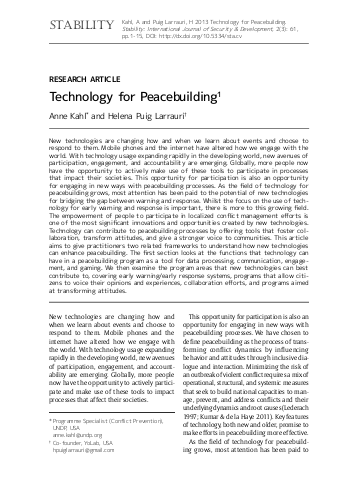
New technologies are changing how and when we learn about events and choose to respond to them. Mobile phones and the internet have altered how we engage with the world. With technology usage expanding rapidly in the developing world, new avenues of participation, engagement, and accountability are emerging. Globally, more people now have the opportunity to actively make use of these tools to participate in processes that impact their societies. This opportunity for participation is also an opportunity for engaging in new ways with peacebuilding processes. As the field of technology for peacebuilding grows, most attention has been paid to the potential of new technologies for bridging the gap between warning and response. Whilst the focus on the use of tech- nology for early warning and response is important, there is more to this growing field. The empowerment of people to participate in localized conflict management efforts is one of the most significant innovations and opportunities created by new technologies. Technology can contribute to peacebuilding processes by offering tools that foster collaboration, transform attitudes, and give a stronger voice to communities. This article aims to give practitioners two related frameworks to understand how new technologies can enhance peacebuilding. The first section looks at the functions that technology can have in a peacebuilding program as a tool for data processing, communication, engagement, and gaming. We then examine the program areas that new technologies can best contribute to, covering early warning/early response systems, programs that allow citizens to voice their opinions and experiences, collaboration efforts, and programs aimed at transforming attitudes.